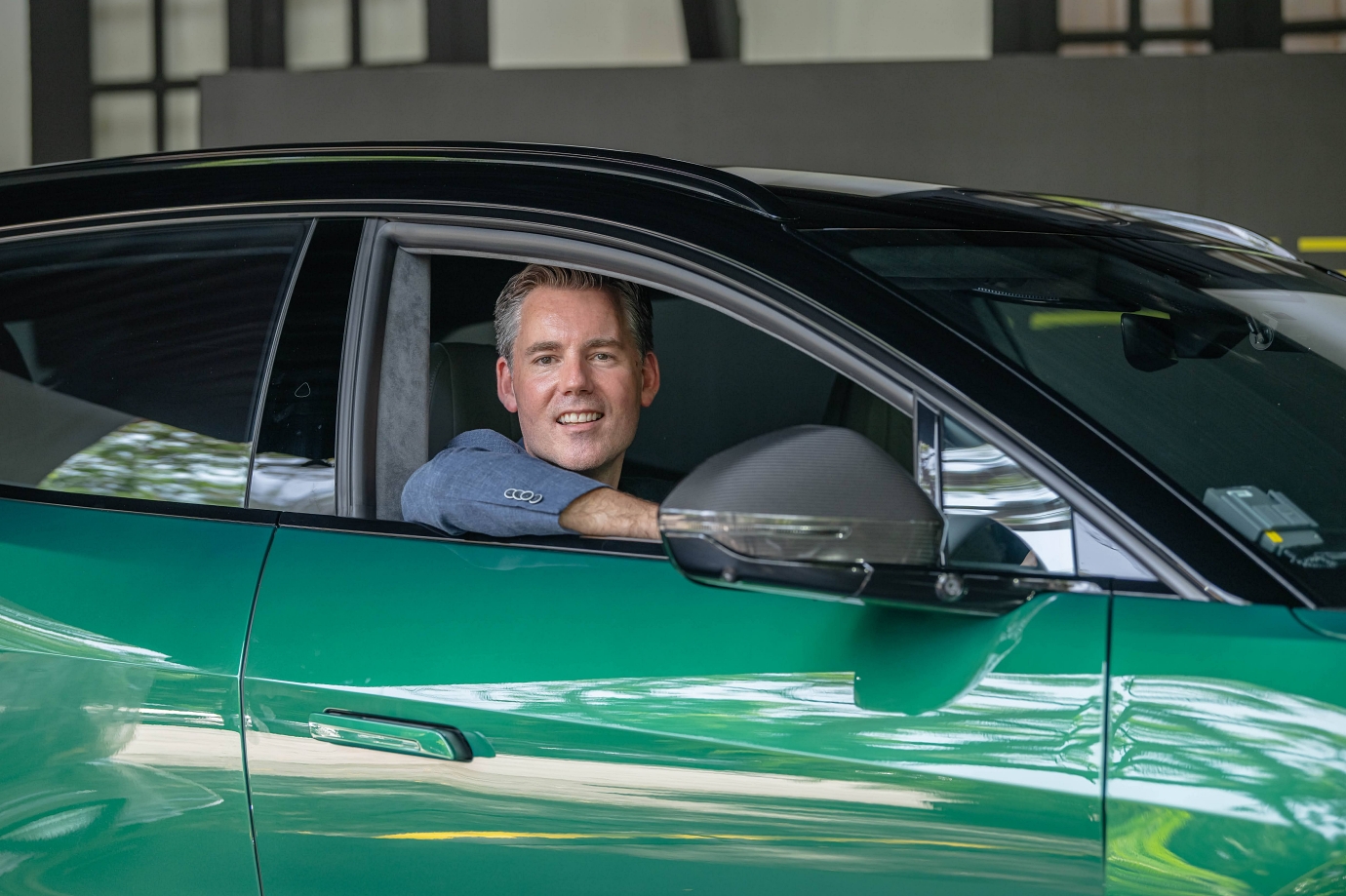A Chat with Dan Balmer, Regional Director, Lotus Asia-Pacific and Middle-East : Relight My Fire

A Chat with Dan Balmer, Regional Director – Lotus Asia-Pacific and Middle-East : Relight My Fire
Buona Terra Italian Restaurant, Singapore - Disco never goes out of style. Neither does Lotus, it seems, as the brand gets groovy and enjoys a newfound renaissance thanks to investment from majority shareholder Chinese automotive giant, Geely.
With the excellent Emira and now the all-electric Eletre SUV, the Lotus position has gone from strength to strength, especially with a parade of sportscars like the Emeya, the Type 134 and the Type 135 in the pipeline.
(Click HERE to read our First Drive Review of the Lotus Emira V6)
One-trick ponies need to be sure they’re close to the top of their game, but very few manage it.
Lotus is one of the success stories, but even then, it hasn’t been resting on its laurels.
There’s definitely more talent than talk, because the brand has nimbly pivoted from stripped-out track-ready road-legal sportscars (like the 340R, Elise, Exige, 211 et al) to the grand touring Evora (and mid-2000s Europa if you recall), before arriving at the Emira lifestyle sportscar and now the Eletre hyper-SUV, which even enjoys the benefits of first-mover advantage.
After all, if Lotus expects to transform the (less than) 1,000 cars built and sold last year to 150,000 by 2028, one of the things it has to address is the ‘accessibility’ of its cars to reach a new, larger (and younger) audience… as opposed to only selling to the same old group of die-hard purists.
And by ‘accessibility’, we’re thinking in terms of physical (ingress / egress), performance (not just on the track!) and, *gasp* practicality (both Emira and Eletre have cup-holders, imagine that!).

Take the all-electric Eletre SUV as an example, which takes the form of the gorgeous Galloway Green mid-tier Eletre S model with 611hp here at the Singapore launch.
“If we look at growth opportunities, we’re thinking SUV and BEV (hybrids carry too much weight ‘baggage’ for a performance machine). So, if we’re looking to reset Lotus for a new generation of customers and appeal to a new audience, it makes sense to choose a BEV SUV concept,” Dan tells us.
Besides, in the premium-plus and higher segments, folks aren’t limited to having just the one car, high COE or not.
“Owners of Lotus sportscars also have practical SUVs, but when they go from their sportscars into a SUV, the contrast is quite stark in terms of driving characteristics. So, we decided to bring the Lotus blend of style, driving traits and new EV tech into this world. Driving enthusiasts are able to combine their sportscar-loving ways with a package that’s practical as well,” he says.
Dan continues, “The price point has gone up, because we target the premium-plus segment, but our cars are more luxurious these days as well. Furthermore, our (new) owners (that also includes more of a lifestyle audience) welcome the fact we have more practicality in the car now.”
Before the purists work themselves into an apoplectic fit, the Eletre isn’t just a Lotus in name, but in spirit too.
“People need to drive the car to experience it properly, because that’s where the ride and dynamic handling characteristics shine through. It’s important for us to capture the soul of the brand in the Eletre as well and this means a certain level of driver engagement and exhilaration.”
Dan is also quick to emphasise that the Eletre is built on a platform unique to Lotus and it has no Geely parts. Considering the fact that Volvo, Polestar and Lynk & Co come under the Geely umbrella, the Eletre’s platform isn’t a re-engineered or repurposed one shared within the Group.

The Eletre may be priced in the premium-plus segment (sans COE, Eletre S: S$598,800, Eletre R: S$693,800 based on 2024 EEAI & VES), but its performance (especially the top-spec R’s 900+hp), panache and posh-factor are commensurate with the SUV / Crossover offerings of more expensive marques like Aston Martin (DBX), Lamborghini (Urus) and Ferrari (Purosangue)... except none in the segment is electric yet.
“The popularity of the Eletre isn’t because it is an EV, but because it is a well-designed performance SUV that has the side benefit of being an EV, with all the luxury, space and advantages that being an EV brings with it,” Dan clarifies.
Lotus may be a legacy brand, but the Eletre certainly isn’t a legacy product, which means the brand can start with a clean slate for a BEV SUV without any of the ‘baggage’ that more mainstream brands are saddled with.
However, this is not to say Lotus is a n00b in the EV space, because the same technical team that brought Tesla’s very first product – the Roadster – to production is still involved in Lotus to this very day and is tasked with bringing the Evija to market.
“There’s a lot of retained knowledge in Lotus, so our electrification journey isn’t simply the case of a traditional brand transforming into an EV brand – we’ve already had that experience. The talent has always been here, but what we needed was the injection of investment, which we now have with new factories and access to assets within the Geely Group,” Dan explains.
What’s one of the biggest misconceptions over Lotus launching a SUV?
Dan smiles, “Folks like to talk about Colin Chapman turning around in his grave with the launch of a SUV, but he was a SUV fan who had a Range Rover back in the day."
He continues, “We reckon he would have enjoyed all the technology breakthroughs that have come with the rise of the EVs. Don’t forget, he was all about pioneering breakthrough technologies and breaking-down barriers, and the Eletre is doing all of this for Lotus – we think he would enjoy this revival of Lotus.
PHOTOS Lotus Singapore










